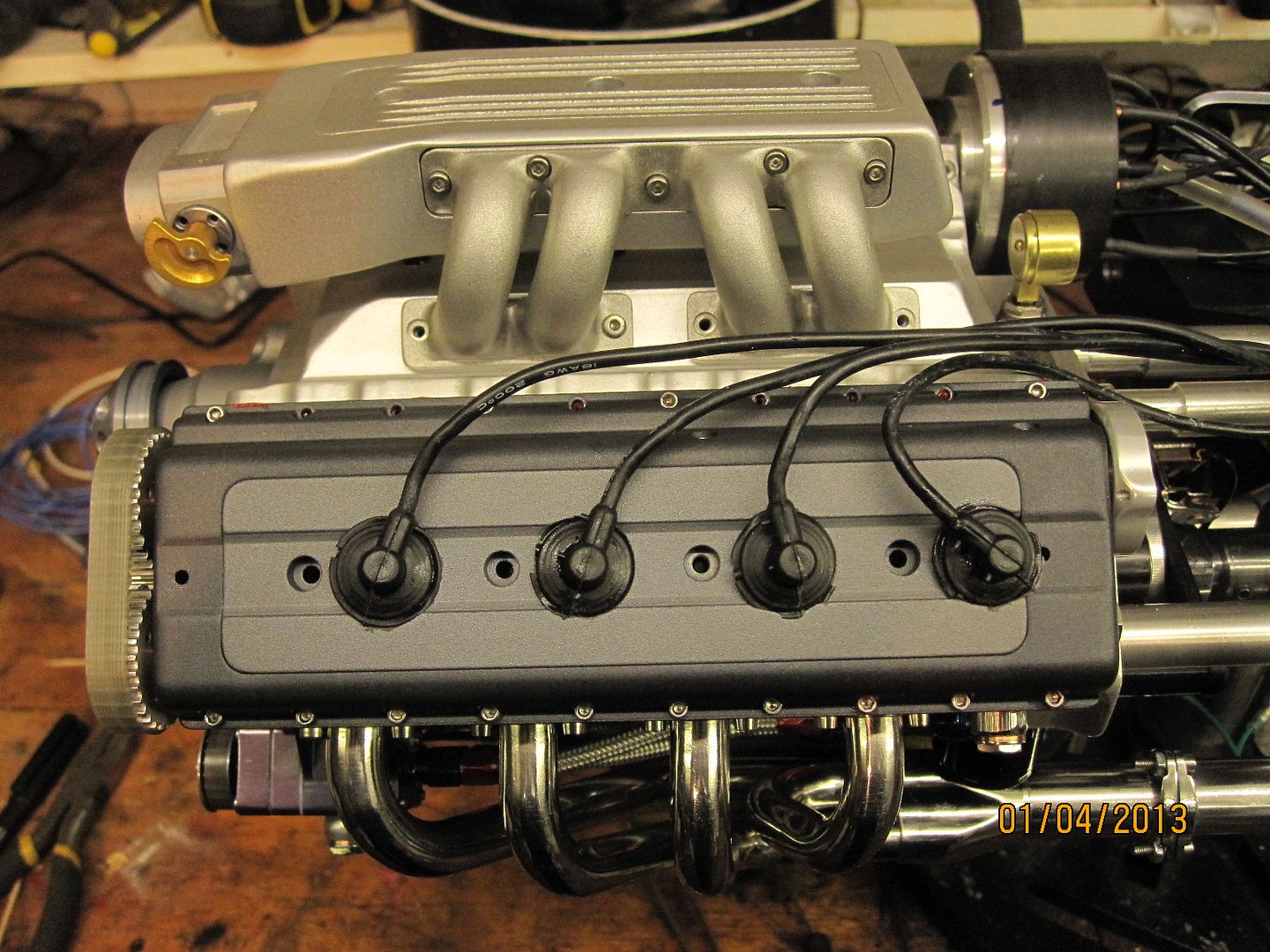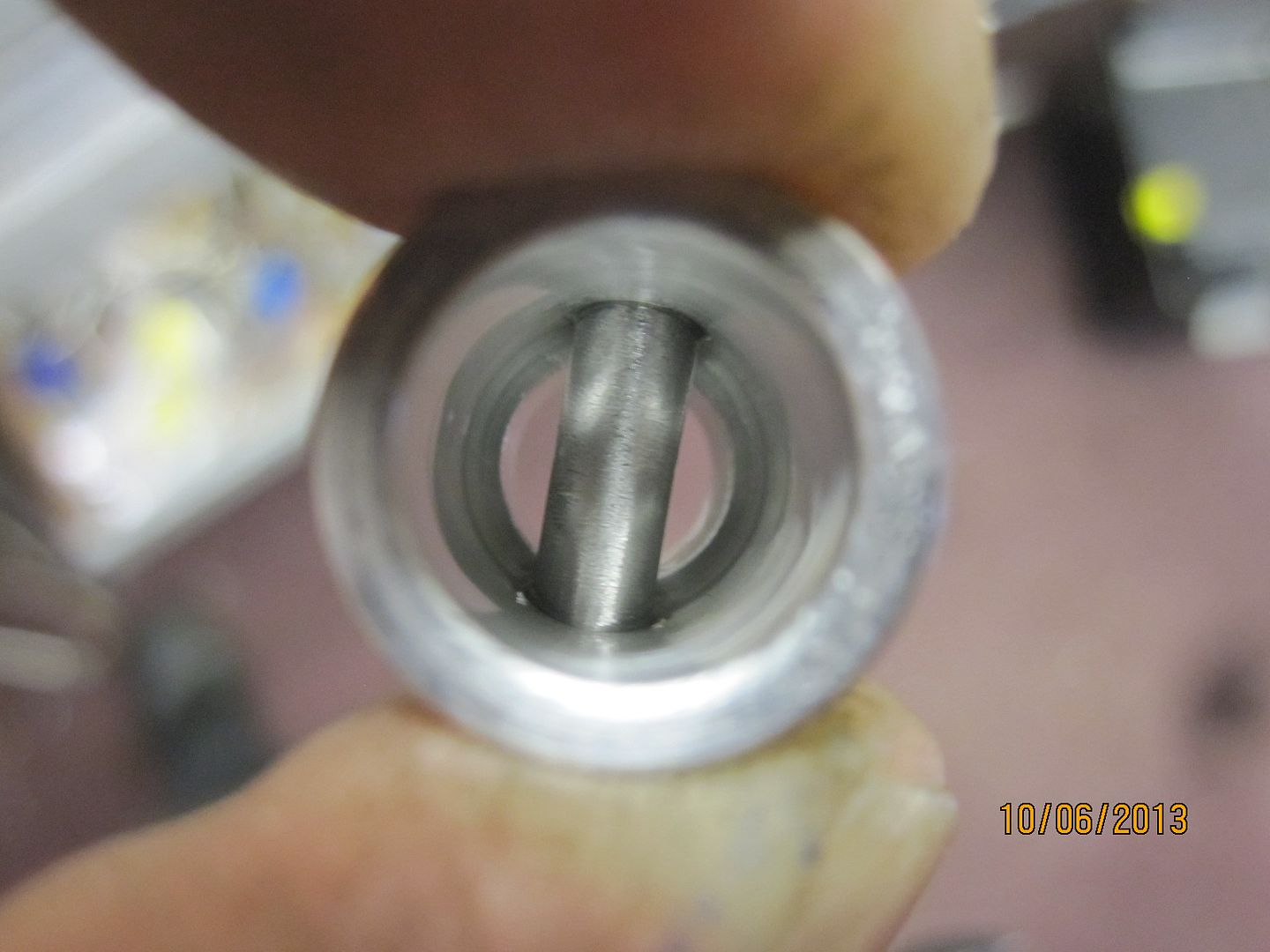Maybe it is time for a recap. The ultimate plan is, or was at he start, to build a fuel injected V8. Although I have started designing my next one, I still intend finishing this, even if only to sell it on.
This is the injection bit, but no injector yet.
So, on the carb side I'm not too interested now, my little RC aero carb was just intended to get the engine to run. It won't rev through the range with this carb, the mixture screw has to be set for low, mid or high rpm manually.
It turns out it is a good carb from an atomising point of view, probably because of it's small bore. This is all that's required at the initial fire-up stage, to reduce the number of unknowns. I would use this carb again next time.
My particular issue with getting the engine to start was almost entirely down to a not strong enough spark. The simple pressure chamber tester showed this up very clearly, that just because the plug will fire in free air doesn't mean it will fire in the cylinder at, say 90psi?
For what it's worth I would probably test run my next engine with points initially, as again it reduces the number of unknowns. You can't really go far wrong with points, condenser and coil.
Now I know the engine runs I need to re-visit my first electronic ignition system and find out why that didn't work. I suspect he coils are crap.
The way I would look at it from now on it if it won't fire with a little rc carb and points, then there's something else wrong.
One other must on initial fire up would be to pre-heat the engine, to 60c at least. This helps to get fuel vapour into the cylinder, rather than just droplets.
I'm going to follow straight on with piston rings, but will post this before I lose it.






























![MeshMagic 3D Free 3D Modeling Software [Download]](https://m.media-amazon.com/images/I/B1U+p8ewjGS._SL500_.png)
















![DreamPlan Home Design and Landscaping Software Free for Windows [PC Download]](https://m.media-amazon.com/images/I/51kvZH2dVLL._SL500_.jpg)





















